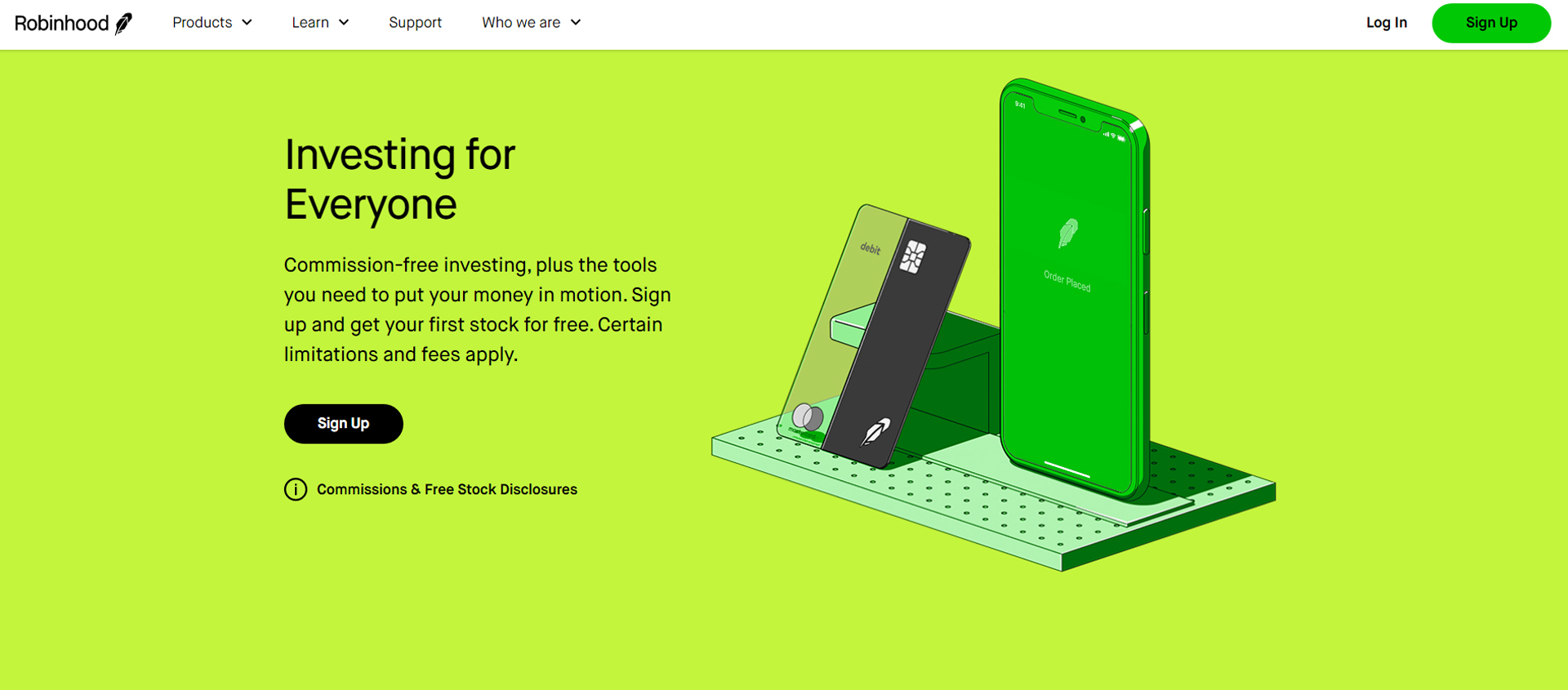
Log In – Rȏbinhood® – Sign in to my account (official website)
Robinhood was founded in 2013 by two former Stanford roommates, Vlad Tenev and Baiju Bhatt.2 Launched with a desire to expand access to the market by reducing barriers to entry, the platform quickly found a home with young, tech-friendly traders thanks to a simple design and intuitive trading experience. It’s clear that Robinhood’s brand has struck a chord, with more than 11.4 million monthly active users and $62 billion in assets under custody as of December 31, 2022.
No-fee and no-minimum trading makes it easy for beginners to get started with investing, and the ability to trade fractional shares gives users access to a greater range of assets than they might otherwise be able to afford. The platform provides a simple menu of assets such as stocks, ETFs, and direct cryptocurrency trading, further streamlining the app and trading experience. Options trading is offered as well, although some limitations in order types and concerns about the quality of trade executions may deter more serious investors. Previously, Robinhood only offered individual accounts, but on January 12, 2023, the company announced that Robinhood Retirement, which launched via waitlist in December, had become available to all eligible customers.
Robinhood’s limitations are a recurring challenge for advanced traders and are significant enough to drive sophisticated investors to seek alternative broker options that better align with their trading approach. For example, Robinhood offers no fixed income, mutual fund, foreign exchange, or futures trading, thereby restricting trading and investing strategies that require a wide array of asset classes. This lack of assets combined with an overall lack of tools, calculators, and advanced charting features makes it very difficult to execute more complex trading strategies.
Educational content, while improving, still isn’t up to par with many of Robinhood’s competitors’ offerings. An intentional focus on enhancing this area is apparent, though. Robinhood continues to expand its Learn section with more material and has enhanced the onboarding questionnaire to help users understand investing basics while setting risk parameters that match their tolerance.
Robinhood’s platform is receiving focus in other areas as well. Cash management enhancements such as providing a higher interest rate on uninvested cash as well as a cash card product aim to round out the platform and draw in more clients. Still, questions linger about Robinhood’s reliability and motivations due to significant platform outages, fallout from restrictions placed on certain meme stocks like GameStop in January 2021, and misleading customers about sources of revenue related to order routing.
Pros & Cons
Pros
- Very simple, intuitive trading experience
- No trading fees or commissions
- Fractional share trading and direct cryptocurrency access
- Solid cash management features and recurring investment functionality
Cons
- Limited asset types
- Limited research and educational content
- Lack of transparency
Pros Explained
- Very simple, intuitive trading experience:Robinhood’s platform lets investors trade in the market seamlessly. The sleek mobile app design reflects Robinhood’s mobile-first disposition, although a web-based platform is available as well. Robinhood leans into its expertise as a mobile offering, catering to traders who are looking for basic features that are easy to navigate quickly.
- No trading fees or commissions: This is the hallmark of Robinhood’s platform. Thanks to its innovative challenge to the industry, many brokers were forced to reduce or eliminate their trading fees to remain competitive.
- Fractional share trading and direct cryptocurrency access:Fractional share purchases can be made with as little as $1, and the dividend reinvestment program (DRIP) automatically reinvests dividends from stocks or ETFs (provided the positions support fractional shares).7 Direct crypto access allows traders to buy and sell different coins with ease.
- Solid cash management features and recurring investment functionality: An innovative cash card lets users invest rewards earned from purchases. Interest on cash sweep accounts allows users to earn up to 1.5%. The recurring investment feature is straightforward to set up, allowing users to quickly automate how much they put in the market at a cadence that makes sense for them. Robinhood Gold members can now earn 4.65% on uninvested cash.
Cons Explained
- Limited asset types:Robinhood has recently added retirement accounts but still doesn’t offer all of the assets some investors are looking for, including fixed income, mutual funds, foreign exchange, or futures trading. Moreover, because only brokerage, IRA, and Roth IRA accounts can be opened on Robinhood, investors are deprived of savings and other account types available elsewhere.
- Limited research and educational content: Research and educational material at Robinhood don’t measure up to competitor standards, making it difficult for traders to get the most out of the platform. There are no stock or ETF screeners available at all, and other research tools are rudimentary at best. Education material is improving, but there’s still room for this area to grow in terms of both the topics covered and the formats available.
- Lack of transparency: A history of lacking in transparency on outages and trading restrictions with meme stocks will give many traders pause before utilizing Robinhood as their preferred platform. Investors may not have full confidence that they’ll have access to their positions. Robinhood has become more transparent about payment for order flow and publishes its 606 report, but the reliance of Robinhood on PFOF is still not as widely understood as it probably should be.